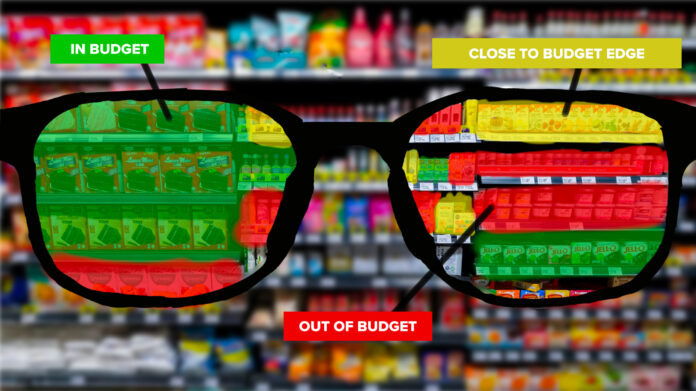The idea behind the Augmented Reality Budget Shopping Glasses is the wearer can activate the glasses with a straightforward voice command or touch gesture when entering a store. The user’s bank accounts or other financial applications are connected, and the glasses analyze the user’s recent spending patterns and monthly budget. Using 5G technology the AR glasses quickly read the price tags as the customer looks at items on the shelf. The glasses’ lenses use intuitive color cues or overlay visuals, such as a green outline for items that are within budget, a yellow one for items that are on the edge of the budget, and a red one for items that are out of their current financial reach.
The concept can be developed further by enabling consumers to compare pricing from neighboring retailers or online merchants in real-time, take advantage of ongoing specials and discounts, and even factor in those prices. This would ensure that they are getting the best deal possible. This is advantageous for people who want to check fast product reviews or sustainability scores in order to make more educated decisions as well as those who are cost-conscious. Budgetary considerations are simply one aspect of the Augmented Reality Budget Shopping Glasses. They bring in a new era of buying, one in which technology empowers customers to make decisions that are in line with their values, interests, and long-term aspirations as well as their wallets.
Takeaways
While in my mind I feel like this would provide certain benefits by providing real-time feedback on purchases, it helps shoppers stick to a predetermined budget, thereby reducing impulsive and unnecessary spending as well as quickly and efficiently filter products that align with their financial goals, saving time and providing a streamlined shopping journey. I also see the negatives, the first one that comes to mind is that this product would be extremely expensive and I feel like the customer who would need this the most would not be able to afford it. There would also be security issues, the glasses would require immediate access to individual financial information in order to identify whether a product is within a customer’s price range. Due to the constant transmission of sensitive data, users may be exposed to security breaches.




